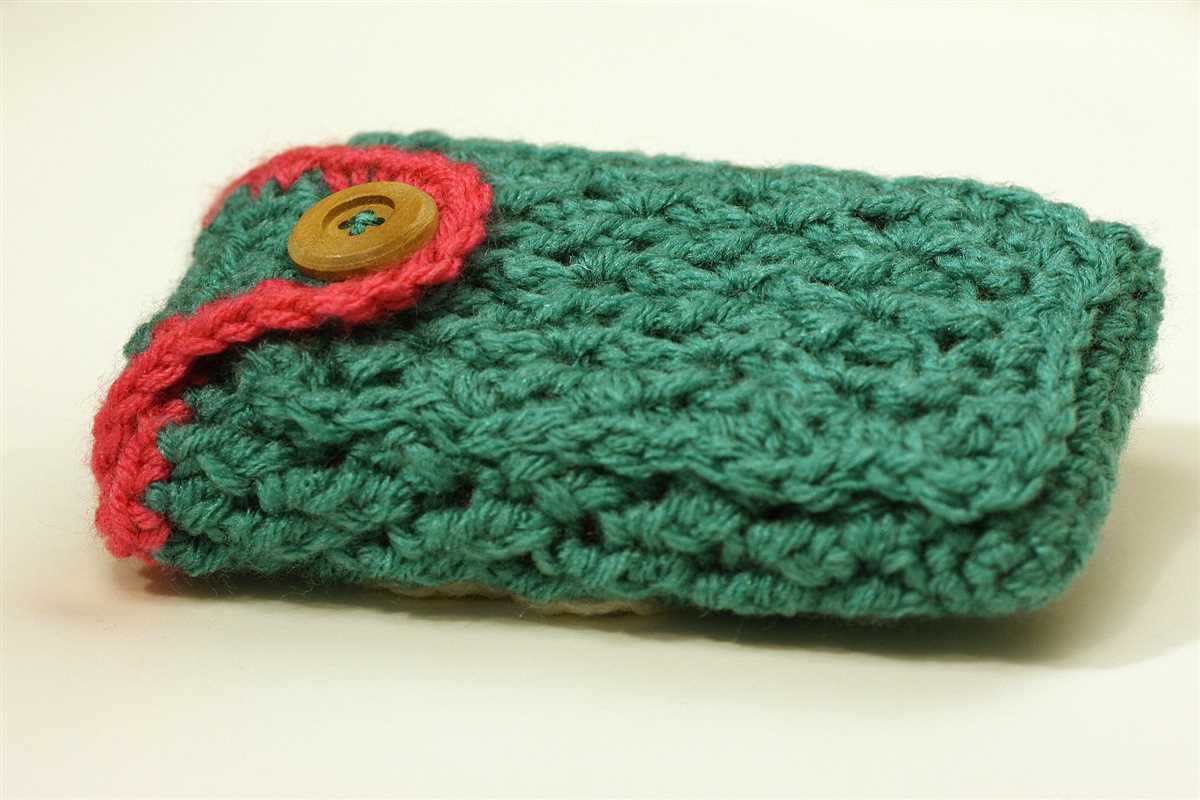
Knitting is not only a relaxing and creative hobby, but it can also be practical. One great way to put your knitting skills to use is by making cell phone bags. These bags protect your precious device from scratches and bumps while also adding a touch of personal style. Best of all, there are plenty of free knitting patterns available for cell phone bags, making it easy to find a design that suits your taste.
When it comes to knitting patterns for cell phone bags, the possibilities are endless. You can choose from a variety of styles, including simple drawstring pouches, buttoned flap bags, or even intricate cable-knit designs. Whether you prefer a classic and timeless look or something more trendy and eye-catching, there is a pattern out there for you.
Not only are cell phone bags great for protecting your device, but they also make fantastic gifts. With so many patterns available, you can easily find one that matches the personality and style of your recipient. Knitting a cell phone bag for a friend or family member shows that you care and have put thought into their gift.
What are cell phone bags?
Cell phone bags are small accessories designed to hold and protect cell phones. They are typically made from fabric or other soft materials and come in various shapes and sizes to accommodate different types of phones. These bags are commonly used to keep cell phones safe and secure when not in use, preventing scratches, bumps, and other damage.
Cell phone bags can be simple pouches with a drawstring or zipper closure, or they can have additional features like pockets and straps. Some bags are specifically designed for certain phone models, while others are more generic and can fit a range of phone sizes. They often feature decorative elements such as buttons, beads, or embroidery, making them fashionable accessories as well as functional protective cases.
Why use a cell phone bag?
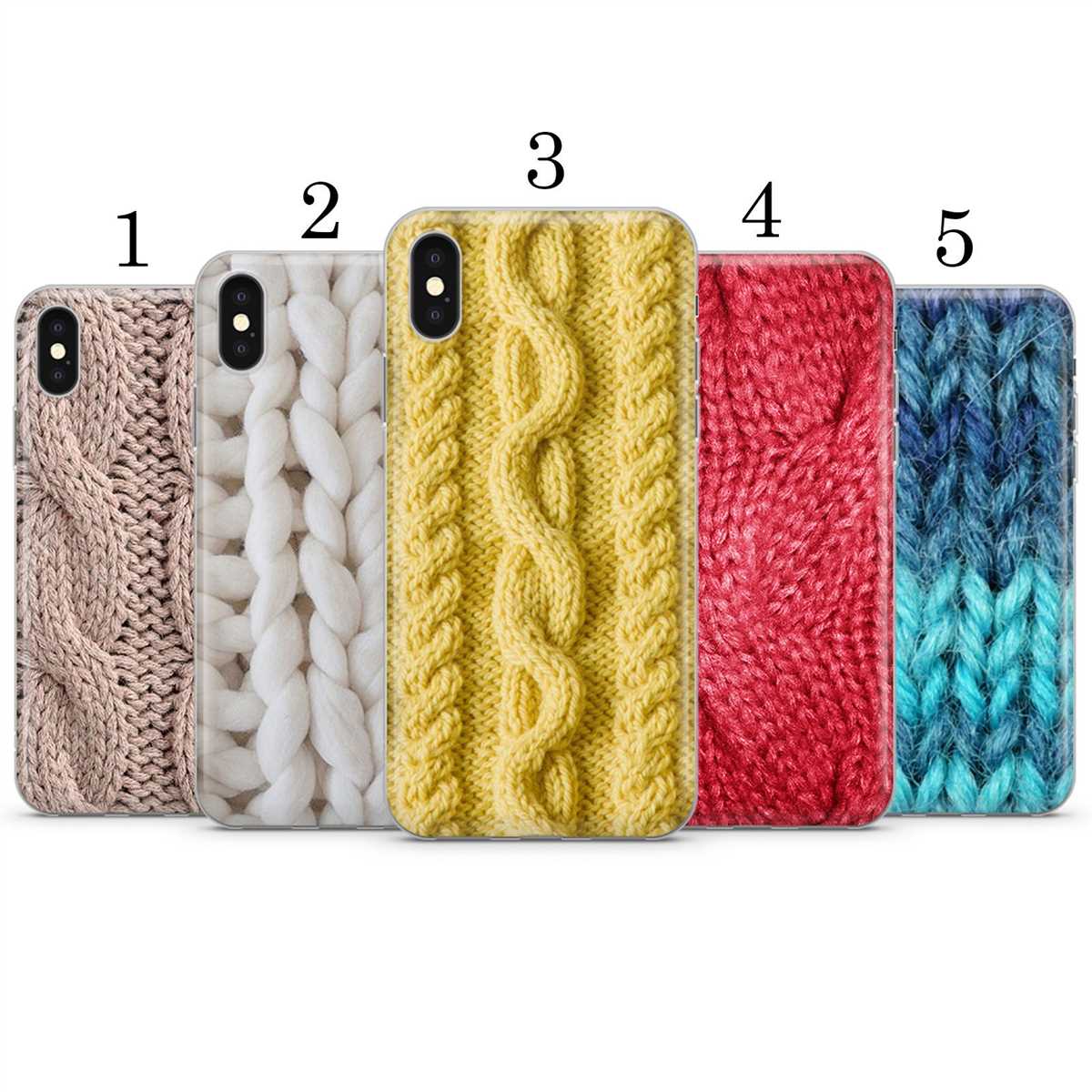
- Protection: Using a cell phone bag helps protect your phone from scratches, dust, and impact damage. It can also prevent your phone from being damaged by other objects in your bag or pocket.
- Convenience: Cell phone bags provide a convenient way to carry your phone, keeping it easily accessible while keeping your hands free.
- Organization: Many cell phone bags come with additional pockets or compartments, allowing you to carry other small items, such as credit cards, keys, or earphones, along with your phone.
- Style: With so many designs and patterns available, cell phone bags can be a stylish accessory that adds a personal touch to your phone and outfit.
- DIY Option: Making your own cell phone bag using free knitting patterns allows you to customize the design, colors, and materials to suit your preferences. It’s a fun and creative project that can result in a unique and practical accessory.
Why use cell phone bags?
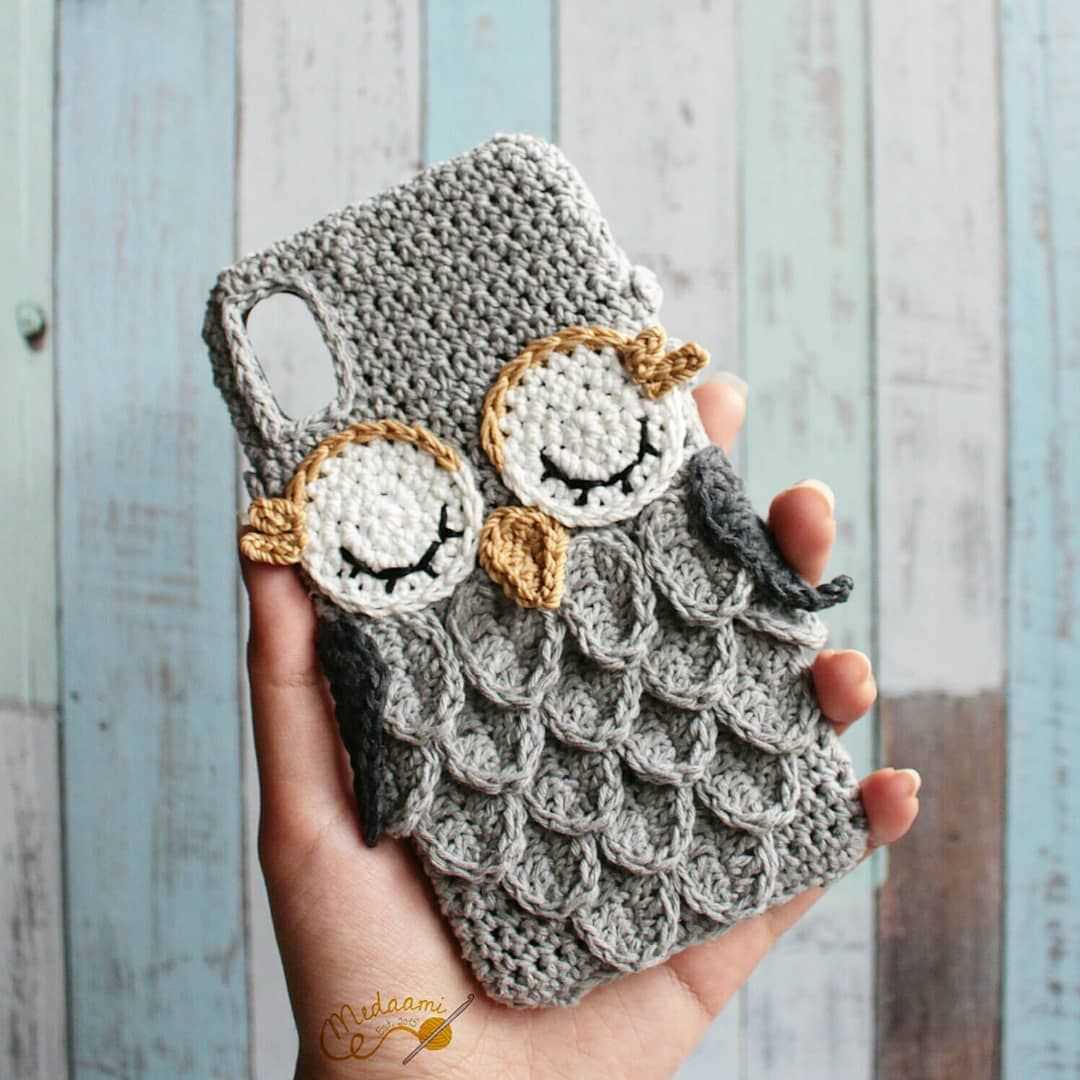
Cell phone bags are a practical accessory that can help protect your phone from scratches, dirt, and other potential damage. They provide a convenient way to carry your phone while keeping it secure and easily accessible. Whether you’re traveling, running errands, or simply going about your daily routine, a cell phone bag can be a useful addition to your accessories.
In addition to their protective function, cell phone bags can also be a stylish accessory. They come in a wide range of colors, designs, and materials, allowing you to express your personal style while keeping your phone safe. Whether you prefer a sleek leather bag, a trendy fabric pouch, or a fun knitted case, there is a cell phone bag out there that will match your taste.
- Convenience: Cell phone bags typically feature a strap or attachment that allows you to wear them around your neck or attach them to your belt or bag, keeping your phone easily accessible and freeing up your hands.
- Protection: A cell phone bag provides an extra layer of protection for your phone, shielding it from potential damage such as scratches, impacts, and dirt.
- Style: With the wide variety of designs available, you can choose a cell phone bag that suits your personal style and adds a touch of fashion to your everyday look.
- Organization: Many cell phone bags also come with additional pockets or compartments, allowing you to carry other small essentials such as credit cards, ID, and cash, helping you stay organized on the go.
Basic knitting techniques
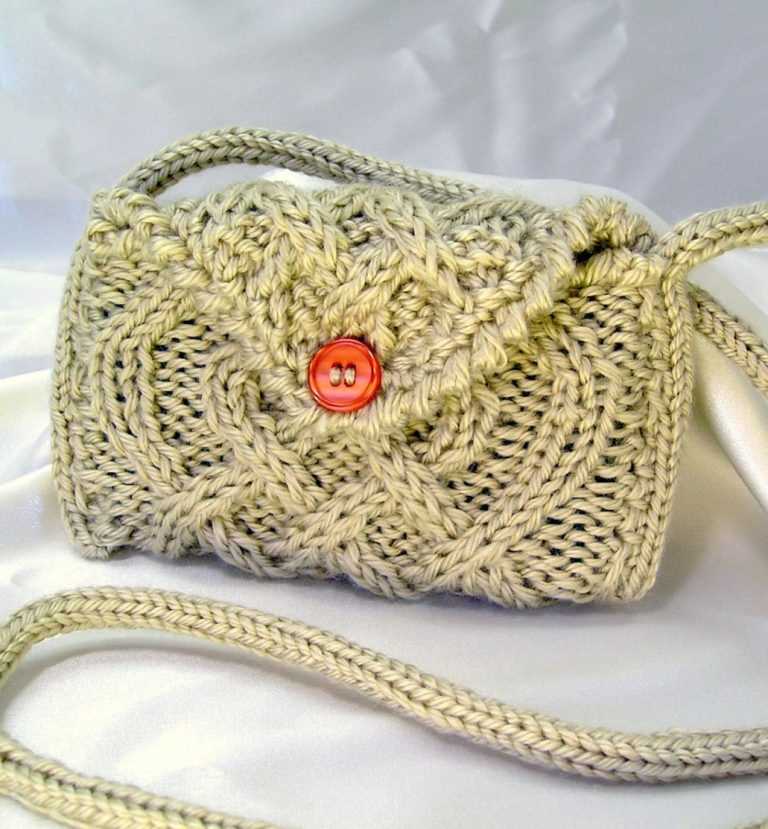
Knitting is a popular craft that involves creating fabric by interlocking loops of yarn with knitting needles. If you’re new to knitting, it’s important to learn some basic techniques to get started. Here are a few key techniques that every beginner should know:
Casting on
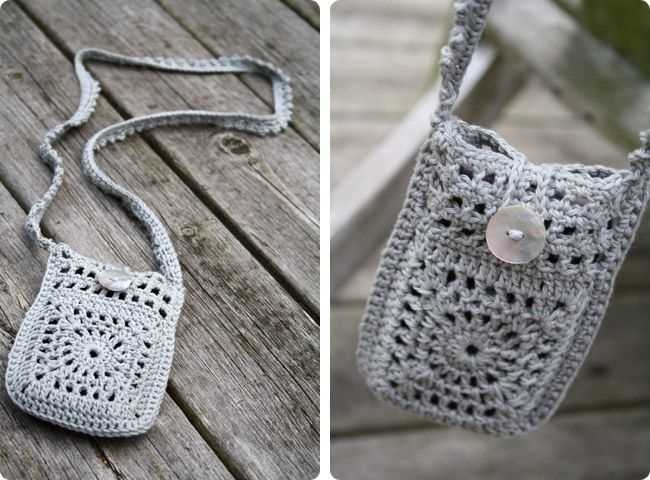
Casting on is the first step in starting a knitting project. It involves creating the initial loops on the knitting needle. There are several methods for casting on, including the long-tail cast on and the knitted cast on. These techniques allow you to create a foundation row of stitches to build upon.
Knit stitch
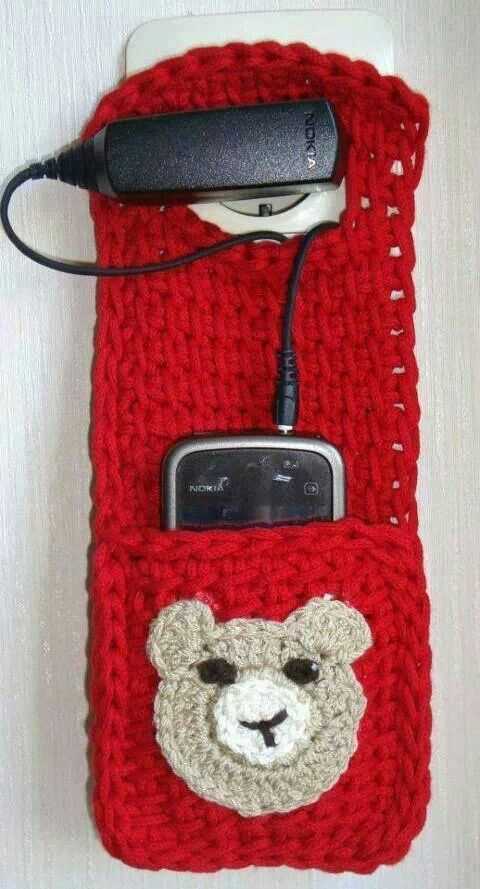
The knit stitch is one of the most fundamental knitting stitches. It’s a simple stitch that creates a smooth, V-shaped pattern. To work the knit stitch, you insert the right-hand needle into the next stitch on the left-hand needle, wrap the yarn around the needle, and pull it through to create a new stitch.
Purl stitch
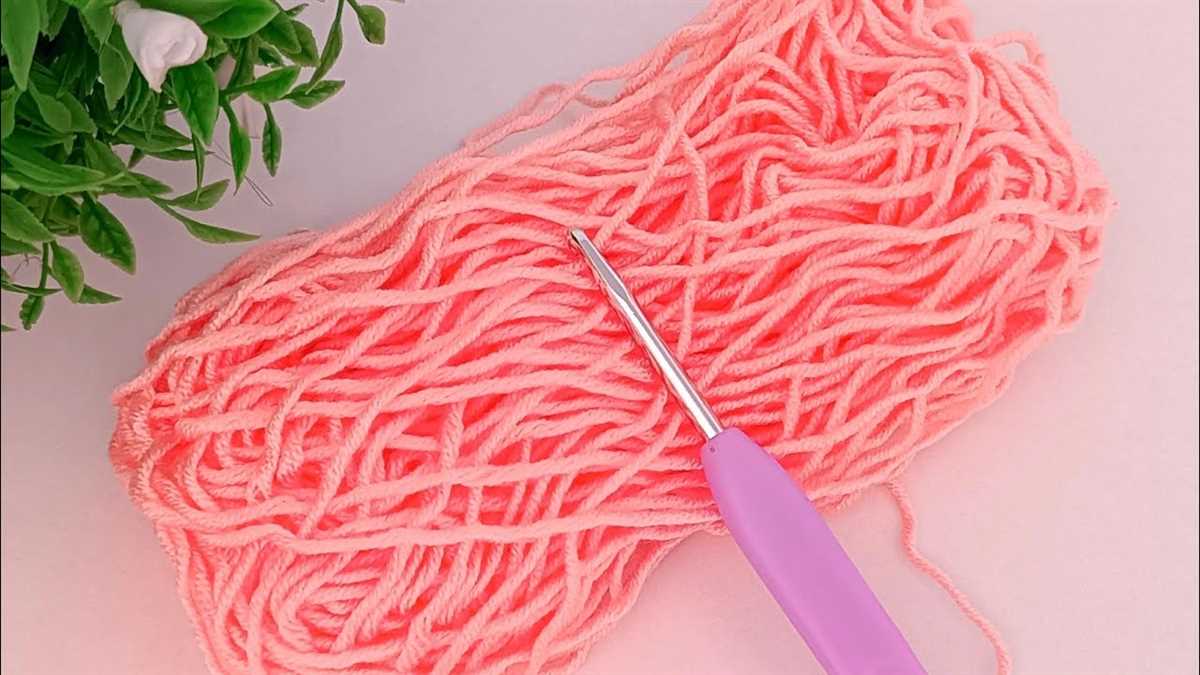
The purl stitch is the reverse of the knit stitch and creates a bumpy, horizontal pattern. To work the purl stitch, you insert the right-hand needle into the next stitch on the left-hand needle from right to left, wrap the yarn around the needle, and pull it through to create a new stitch.
Binding off
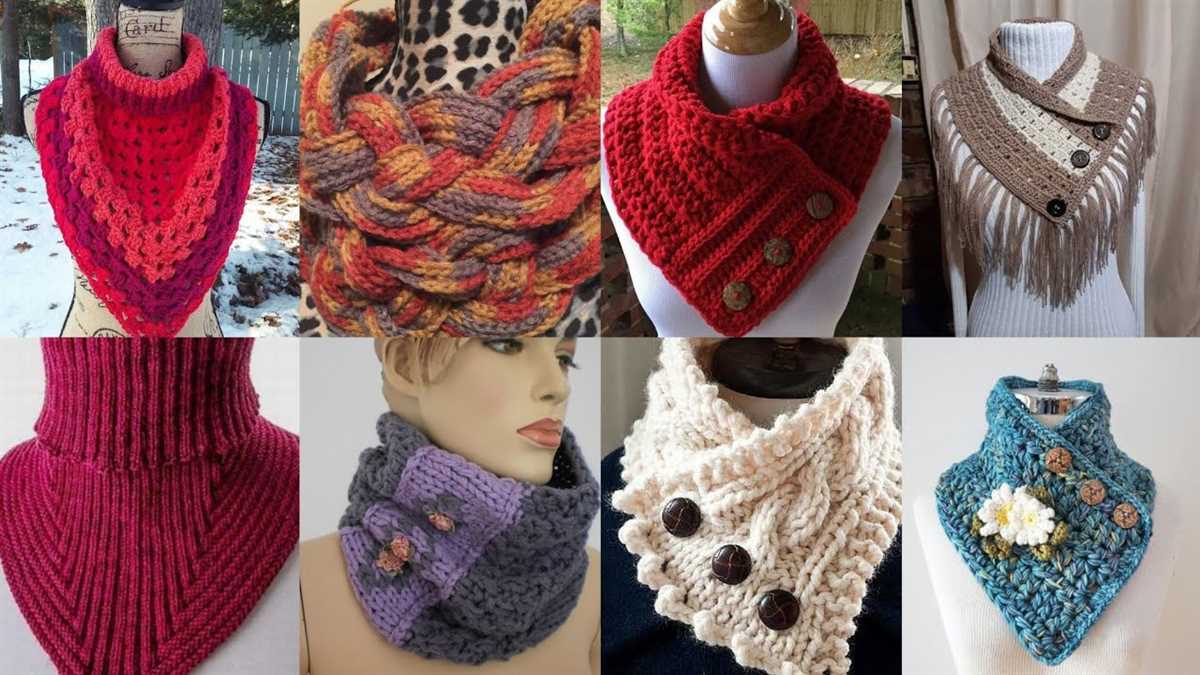
Binding off, also known as casting off, is the final step in completing a knitting project. It involves securing the stitches and creating a finished edge. To bind off, you knit the first two stitches, then use the left-hand needle to lift the first stitch over the second stitch and off the right-hand needle. Repeat this process until only one stitch remains, then cut the yarn and pull it through the last stitch to secure the knitting.
Increasing and decreasing
Once you’ve mastered the basic knit and purl stitches, you can expand your skills by learning how to increase and decrease stitches. Increasing involves adding new stitches to create shaping, while decreasing involves removing stitches to create shaping. There are several methods for increasing and decreasing, including yarn overs, knit two together, and slip slip knit.
By mastering these basic knitting techniques, you’ll be able to create a wide range of knitting projects, including cell phone bags. Practice these techniques and experiment with different patterns and yarns to take your knitting skills to the next level.
Essential Materials for Knitting Cell Phone Bags
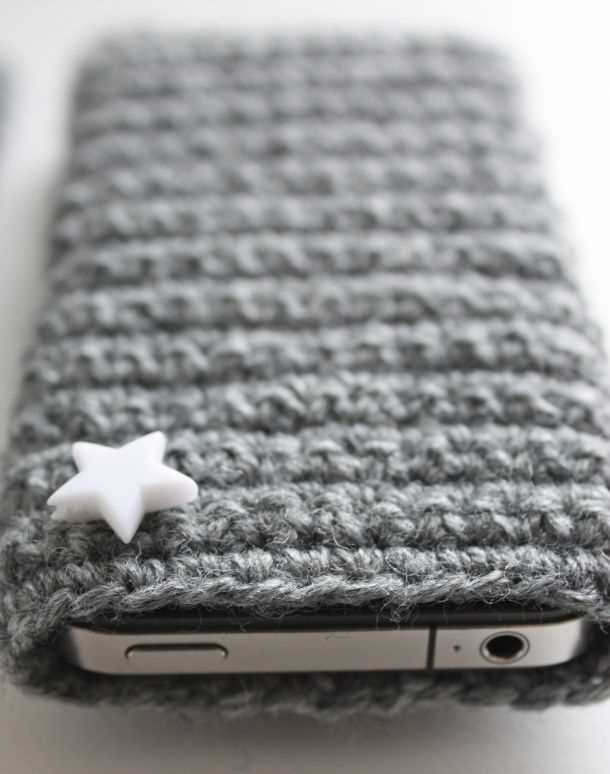
When it comes to knitting cell phone bags, having the right materials is essential to ensure a successful project. The materials you choose will not only determine the final look and feel of your bag but also its durability and functionality. Here are some essential materials that you will need to get started:
Yarn:
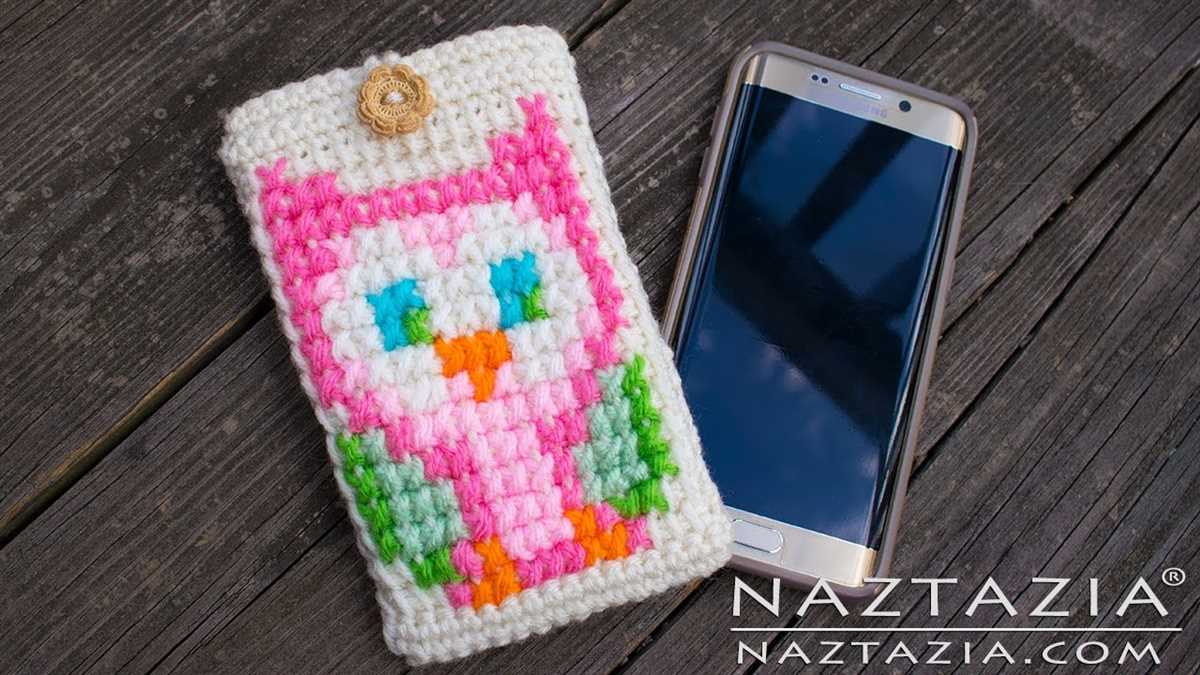
The choice of yarn is crucial in knitting a cell phone bag. It should be sturdy enough to protect your phone from scratches and other damage while offering a soft and cozy texture. Cotton yarn is an excellent choice for its durability and easy care, while acrylic yarn can provide a wide range of colors and patterns. Additionally, consider using yarn with added stretch or reinforcement for extra durability.
Knitting Needles:
Investing in a good set of knitting needles is important for any knitting project, including cell phone bags. Choose a needle size that matches the gauge recommended for your pattern. Circular needles may be preferred for larger bags, as they allow you to knit seamlessly in the round. Double-pointed needles are suitable for smaller bags or when working on a flap or strap separately.
Notions:
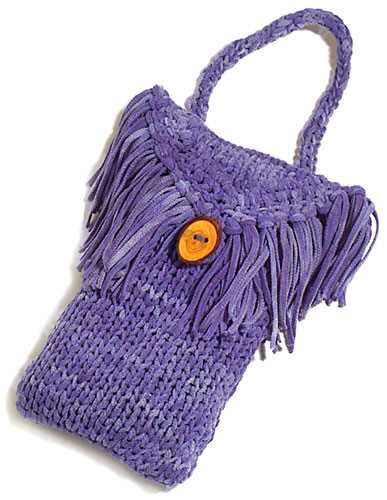
Various notions are essential for knitting cell phone bags. Stitch markers can help you keep track of your progress and mark specific sections in your pattern. A tape measure or ruler is necessary for measuring and checking gauge. Sharp scissors are necessary for cutting yarn, and a tapestry needle is needed for weaving in ends and seaming the bag. Additionally, consider adding buttons, zippers, or other closures if desired for added functionality and style.
Pattern:
While not a physical material, a knitting pattern is an essential component when knitting a cell phone bag. You can find free knitting patterns specifically designed for cell phone bags online or in knitting books. Choose a pattern that suits your skill level and preferences, and make sure to read it thoroughly before starting your project to ensure you have all the necessary materials and understand the instructions.
By having these essential materials on hand, you’ll be well-equipped to knit beautiful and functional cell phone bags. Whether you’re making them for yourself or as gifts for others, knitting cell phone bags can be a fun and rewarding project that showcases your creativity and knitting skills.
Simple knitting patterns for beginners
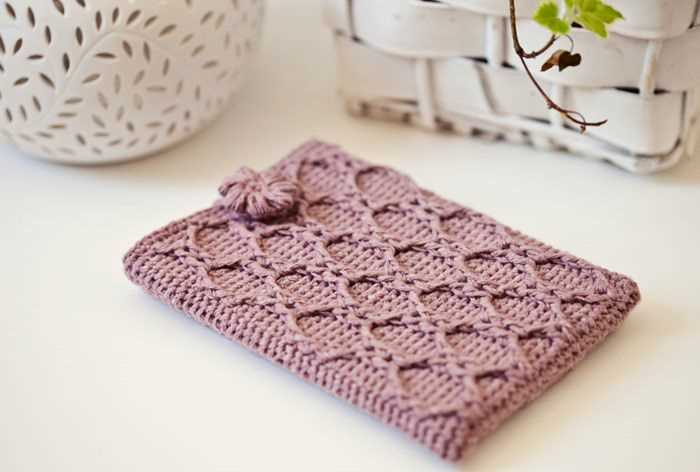
If you’re new to knitting and looking for some easy patterns to get started, there are plenty of options available. Whether you’re looking to make a cozy scarf, a soft hat, or even a cute dishcloth, there are simple knitting patterns that can help you learn the basics while creating something useful and beautiful.
1. Scarf: A scarf is a great beginner project as it only requires basic knitting stitches and can be made with a variety of yarns. Start with a chunky yarn and larger knitting needles to make the process easier and faster. You can experiment with different stitch patterns, such as garter stitch or stockinette stitch, to create different textures.
2. Hat: Knitting a hat is another simple project for beginners. Choose a hat pattern that uses basic stitches like knit and purl, and start with a simple beanie style. You can add embellishments like a pom-pom or a ribbed brim to make it more interesting. Knitting a hat is a great way to practice decreasing stitches, which is an essential skill in knitting.
3. Dishcloth: Knitting a dishcloth is not only a practical project but also an excellent way to practice basic knitting techniques. Choose a simple pattern that uses basic stitches like knit and purl, and use cotton yarn for better absorbency. Dishcloths are quick to knit, and you can experiment with different stitch patterns to create unique designs.
4. Baby blanket: Knitting a baby blanket is a slightly more challenging project but is still suitable for beginners. Choose a pattern that uses simple stitch patterns like garter stitch or stockinette stitch and uses worsted weight yarn for a faster knit. Baby blankets are great for practicing consistent tension and larger projects.
5. Headband: A headband is a small project that can be completed quickly, making it perfect for beginners. Choose a pattern that uses basic stitches like knit and purl and experiment with different stitch patterns and colors. Knitting a headband can help you practice joining in the round or seaming, depending on the pattern you choose.
Remember, the key to successful knitting projects for beginners is to start with simple patterns and gradually increase the complexity as you gain more experience and confidence. Don’t be afraid to make mistakes and learn from them. Happy knitting!
Knitting patterns for different cell phone sizes
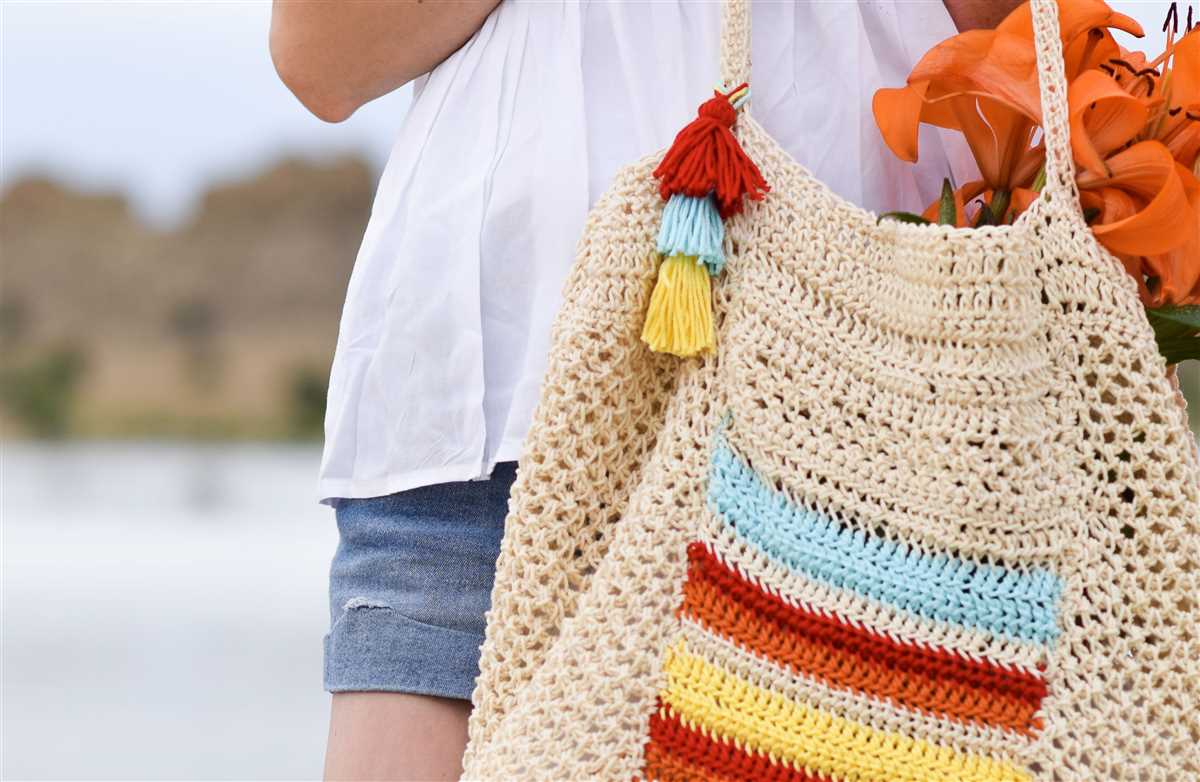
When it comes to knitting cell phone bags, it’s important to have patterns that fit different phone sizes. With the variety of cell phones available today, it’s essential to have patterns that accommodate various dimensions.
Here are some knitting patterns for different cell phone sizes:
- Small Cell Phones: For smaller cell phones, such as flip phones or older models, a simple sleeve pattern works well. You can knit a rectangle that measures slightly larger than the phone’s dimensions, fold it in half, and sew the sides to create a pocket for the phone.
- Regular-sized Smartphones: For regular-sized smartphones, such as iPhones or Android devices, there are several pattern options. You can knit a simple sleeve with a ribbed or textured pattern for added stretch and protection. Another option is to make a pouch with a flap closure to ensure the phone stays securely inside.
- Large-screen Smartphones: For larger-screen smartphones, such as phablets or plus-sized models, a more spacious bag pattern is needed. Consider knitting a bag with a drawstring closure or a buttoned flap to provide extra room for these larger devices.
It’s essential to measure the dimensions of the cell phone you’re knitting for and adjust the pattern accordingly. You can also experiment with different yarn weights and needle sizes to achieve the desired fit and texture. With these patterns, you can create personalized and functional cell phone bags for yourself or as thoughtful gifts for friends and family.
Choosing the right yarn for your cell phone bag
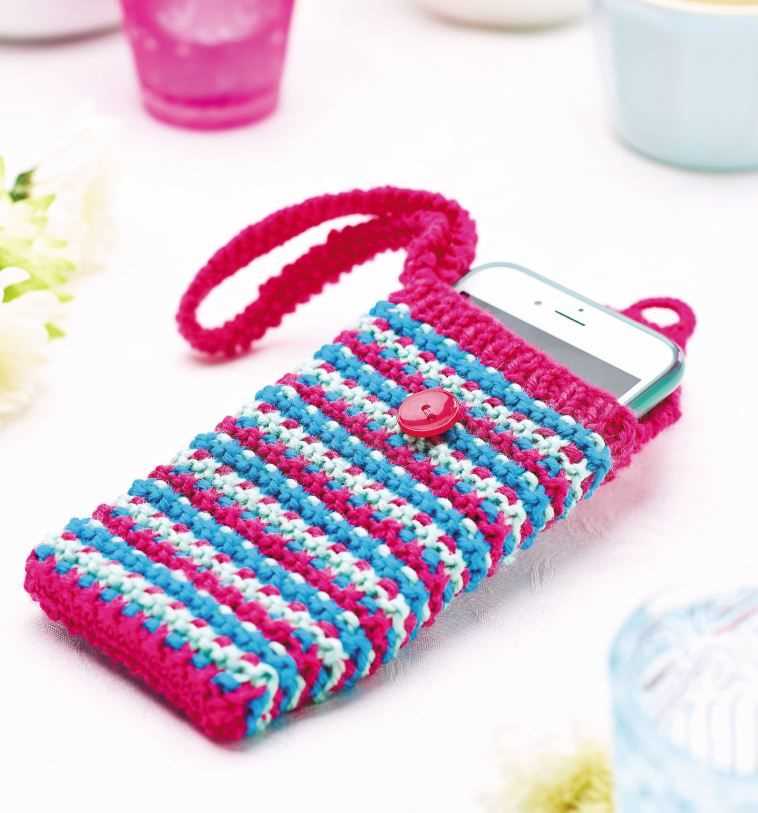
When it comes to knitting a cell phone bag, choosing the right yarn is essential to ensure durability, functionality, and aesthetic appeal. With so many options available, it’s important to consider the specific qualities you’re looking for in a yarn to meet your needs.
Fiber content: One of the first things to consider when selecting yarn is the fiber content. Different fibers have different properties, and each can affect the overall look and feel of your cell phone bag. For example, if you’re looking for a soft and luxurious texture, you might consider using a yarn made from alpaca or cashmere. On the other hand, if durability is your priority, a yarn made from cotton or acrylic might be a better option.
Weight: The weight of the yarn will also impact the final product. The weight, or thickness, of the yarn will determine the overall size and density of the stitches. For a cell phone bag, you’ll want a yarn that is sturdy enough to hold its shape, but not too thick that it becomes cumbersome. Worsted weight or bulky yarns are often a good choice for this type of project.
Color: The color of the yarn is another important consideration. You’ll want to choose a color that complements your personal style and the design of your cell phone bag. Solid colors can provide a classic and timeless look, while variegated or self-striping yarns can add visual interest and dimension to your project.
Availability and cost: Finally, consider the availability and cost of the yarn. Some specialty yarns may be harder to find or more expensive, while more common yarns might be readily available and budget-friendly. It’s important to balance your desired qualities with your budget and accessibility to ensure a successful and enjoyable knitting experience.
In conclusion, choosing the right yarn for your cell phone bag involves considering the fiber content, weight, color, availability, and cost. By taking these factors into account, you can ensure that your finished bag is not only functional but also visually appealing and durable.
How to personalize your cell phone bag
Cell phone bags are a practical accessory to keep your phone safe and easily accessible. However, they don’t have to be plain and boring. With a few simple steps, you can personalize your cell phone bag and make it uniquely yours.
1. Choose your materials: Start by selecting the materials you want to use for your cell phone bag. You can use different types of fabric, such as cotton, denim, or felt. Don’t forget to consider the size and shape of your phone when choosing the fabric.
2. Add embellishments: Get creative and add embellishments to your cell phone bag to make it stand out. You can use buttons, beads, ribbons, or embroidery to add a personal touch. Consider your personal style and the overall look you want to achieve.
3. Incorporate a personal touch: Customize your cell phone bag by incorporating a personal touch. This can be anything from a monogram to a favorite quote or symbol. You can sew or embroider these personal touches onto your cell phone bag for a unique and meaningful design.
4. Consider functionality: While personalizing your cell phone bag, don’t forget to consider its functionality. Make sure the design allows for easy access to your phone and keeps it secure. You can add pockets or compartments to store other small items, such as earphones or credit cards.
5. Follow a pattern or create your own: If you’re new to knitting, there are plenty of free knitting patterns available online for cell phone bags. You can choose one that suits your skill level and personalize it with your fabric and embellishments. Alternatively, if you’re an experienced knitter, you can create your own pattern and design from scratch.
By following these steps, you can personalize your cell phone bag and make it a stylish accessory that reflects your personality and creativity. Whether you prefer a simple and elegant design or a bold and vibrant one, there are endless possibilities to make your cell phone bag truly unique.
Adding buttons and closures to your cell phone bag
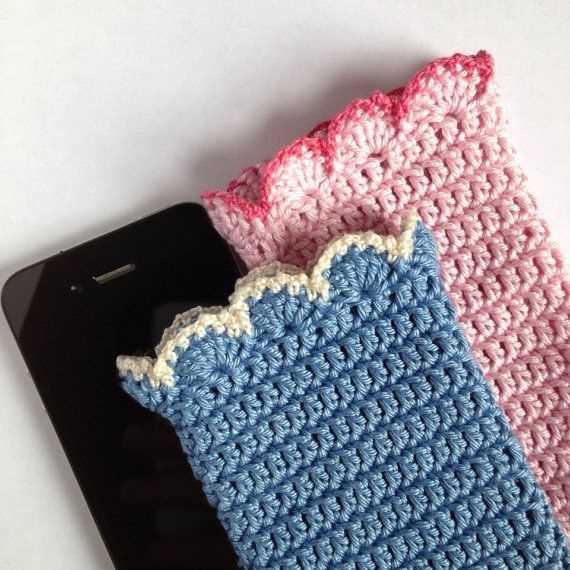
If you want to add a touch of style and functionality to your cell phone bag, consider adding buttons and closures. Buttons not only serve as decorative elements but also help keep your cell phone secure inside the bag. They come in a variety of shapes, sizes, and colors, allowing you to customize your bag to your liking.
When adding buttons, you can either sew them on the outside of the bag or create buttonholes for a more polished look. Sewing buttons on the outside is a simple and quick option, as you can easily decide on the placement and sew them securely. However, if you want a more professional finish, creating buttonholes is recommended. You can use a sewing machine or make them by hand using a buttonhole stitch.
As for closures, there are several options to choose from. One popular choice is the magnetic snap closure, which provides a secure and easy-to-use option. These closures consist of two parts: one with a magnet, and another with a metal disk. They are easy to install by just sewing them onto the bag’s flap and body. Another option is the Velcro closure, which offers an adjustable and strong fastening. Velcro closures come in adhesive or sew-on forms, allowing you to choose the most suitable option for your bag.
If you prefer a more vintage or rustic look, consider using a metal twist lock closure. These closures come in various designs and give your cell phone bag a unique and charming touch. To install them, you will need to create a small hole in the fabric and attach the lock’s components on either side. Finally, if you want a statement closure, consider using a decorative clasp or a toggle button. These closures add a touch of elegance to your bag and serve as eye-catching elements.
Advanced knitting patterns for experienced knitters
If you are an experienced knitter looking for a new challenge, advanced knitting patterns are the perfect way to expand your skills and create beautiful, intricate designs. These patterns offer a variety of techniques and stitches that will test your knitting abilities and allow you to create one-of-a-kind pieces.
1. Lace knitting patterns: Lace knitting patterns are known for their delicate and intricate designs. They often incorporate lace motifs, yarn overs, decreases, and intricate stitch patterns to create beautiful openwork designs. These patterns require precision and attention to detail, making them perfect for advanced knitters who enjoy intricate work.
2. Fair Isle knitting patterns: Fair Isle knitting, also known as stranded knitting, is a technique that involves using multiple colors in a single row to create intricate patterns and designs. Advanced Fair Isle knitting patterns often feature complex color changes and intricate motif combinations. These patterns require excellent tension control and the ability to manage multiple strands of yarn at once.
3. Cable knitting patterns: Cable knitting patterns are a classic favorite among experienced knitters. These patterns create intricate and textural designs by crossing stitches over each other to form cables. Advanced cable knitting patterns often feature complex cable designs with multiple crossings and intricate cable panels. These patterns require concentration and a good understanding of cable construction.
4. Intarsia knitting patterns: Intarsia knitting involves working with different colors to create large areas of color blocks or designs in a knitted piece. Advanced intarsia knitting patterns often feature complex color changes and intricate designs that require careful planning and attention to detail. These patterns are perfect for experienced knitters who enjoy working with color and creating bold, graphic designs.
5. Aran knitting patterns: Aran knitting is a traditional style of knitting that originated in the Aran Islands of Ireland. Aran patterns feature highly textured stitch patterns, often including cables, bobbles, and other intricate designs. Advanced Aran knitting patterns incorporate complex cable panels, intricate stitch combinations, and unique design elements. These patterns require a good understanding of stitch patterns and the ability to follow complex chart instructions.
Whether you choose to tackle lace, Fair Isle, cable, intarsia, or Aran knitting patterns, advanced knitting patterns will challenge and inspire you as an experienced knitter. These patterns offer an opportunity to expand your skills, learn new techniques, and create beautiful, intricate designs that showcase your knitting expertise.
Tips for troubleshooting common knitting mistakes
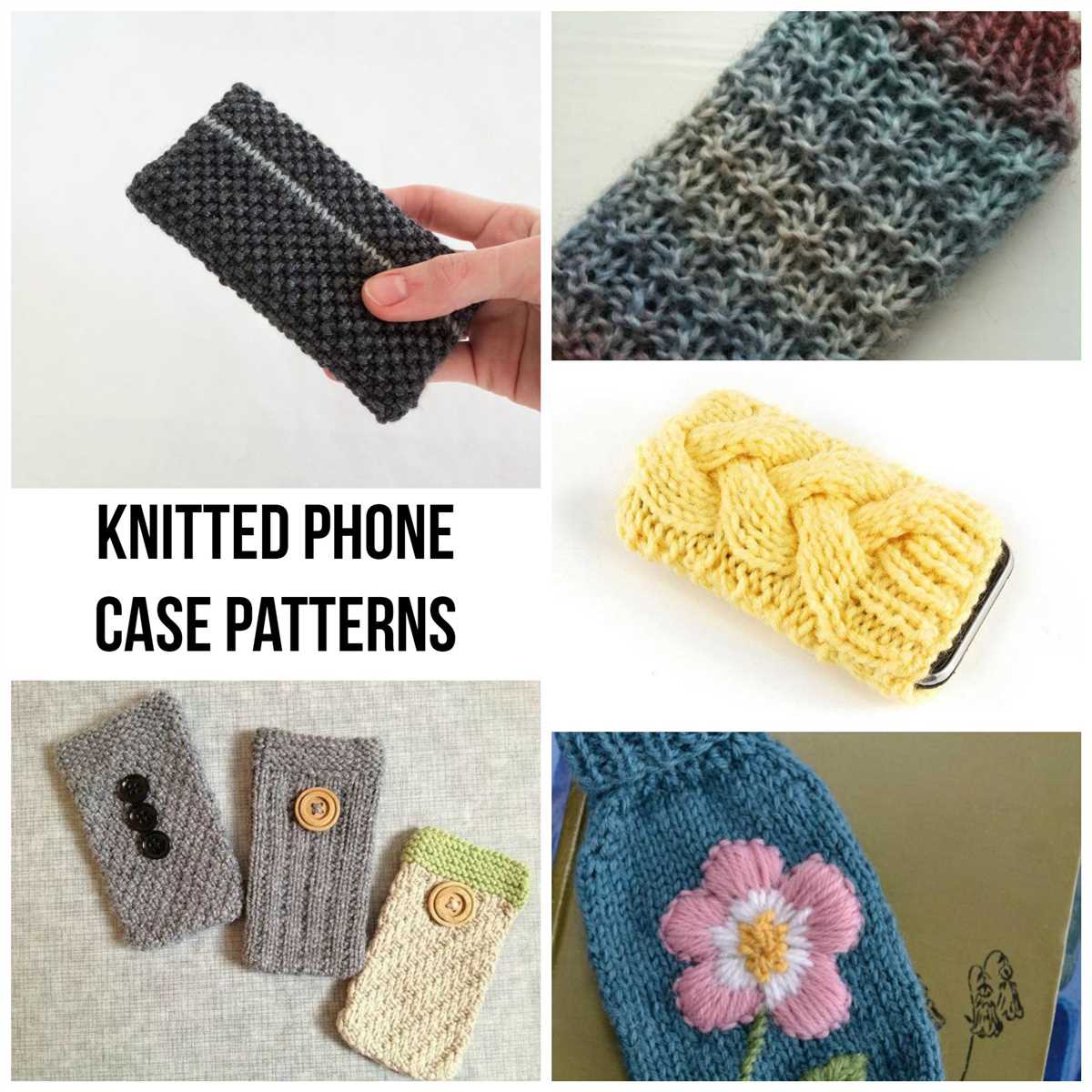
Knitting is a relaxing and enjoyable craft, but even experienced knitters can make mistakes. However, with a few simple tips, you can easily troubleshoot common knitting errors and salvage your project.
1. Dropped stitches: One of the most common mistakes in knitting is dropping a stitch. To fix this, use a crochet hook or the tip of your knitting needle to catch the dropped stitch and pull it through the loop directly beneath it. Be sure to secure it properly by knitting or purling through the stitch to prevent it from unraveling further.
- 2. Uneven tension: Uneven tension is another common issue that can affect the final appearance of your knitted piece. To correct this, you can try adjusting your grip on the needles or using smaller or larger needles to achieve a more even tension. Practice and patience are key.
- 3. Twisted stitches: Twisted stitches can happen when you accidentally knit or purl through the back loop instead of the front loop. To fix this, identify the twisted stitch and carefully unravel it back to the mistake. Then, reinsert the needle correctly and proceed with knitting or purling as required.
- 4. Holes or gaps: Holes or gaps can occur when you accidentally skip a stitch or create unintentional yarn overs. To close these gaps, you can carefully manipulate the stitches around the hole using a crochet hook or the tip of your knitting needle. Alternatively, you can pick up the dropped stitch and secure it properly.
- 5. Incorrect stitch count: Keeping track of your stitch count is essential for ensuring the accuracy of your knitting pattern. If you realize that you have too many or too few stitches, carefully review your work and identify where the mistake occurred. You may need to unravel a few rows to correct the stitch count.
Remember, knitting is a learning process, and mistakes are inevitable. Don’t get discouraged when you encounter errors in your knitting; instead, embrace them as opportunities to hone your skills and improve your technique. With practice, you’ll become a more confident and skilled knitter.
Other uses for cell phone bags
In addition to holding and protecting cell phones, cell phone bags can be used for various other purposes. Here are some creative and practical uses for these small bags:
- Jewelry storage: Cell phone bags can be used to store and organize small jewelry items such as earrings, rings, and bracelets. The soft fabric lining of the bag provides protection against scratches and tangling.
- Accessory organizer: If you have a collection of small accessories like hair clips, bobby pins, or makeup brushes, cell phone bags can be used to keep them organized and easily accessible. Simply place each item in a separate bag to prevent them from getting lost or tangled.
- Travel pouch: When traveling, cell phone bags can be used to store and protect small essentials like earphones, chargers, USB cables, and memory cards. These bags are compact and lightweight, making them convenient to carry in a purse or backpack.
- Gift packaging: Instead of using traditional gift bags or boxes, you can use cell phone bags to package small gifts like jewelry, small trinkets, or even gift cards. Add a decorative ribbon or personalize the bag with a handwritten note to make it more special.
- Emergency kit: Create a mini emergency kit by filling a cell phone bag with items like band-aids, safety pins, a mini sewing kit, pain relievers, and other small essentials. Keep it in your purse or glove compartment for unexpected situations.
Cell phone bags are versatile and can be used for more than just holding and protecting phones. They offer practical and creative solutions for organizing small items, storing jewelry, and even making unique gift packaging. Consider the various uses mentioned above to make the most out of your cell phone bags.
Q&A:
Where can I find free knitting patterns for cell phone bags?
You can find free knitting patterns for cell phone bags on various websites, such as Ravelry, Knitty, and AllFreeKnitting. These sites have a wide range of patterns available for different skill levels and styles.
What materials do I need to knit a cell phone bag?
The materials you will need to knit a cell phone bag include knitting needles, yarn of your choice, and a tapestry needle for sewing up any seams. You may also want to include embellishments such as buttons or beads if desired.
Are there any specific knitting techniques I need to know to knit a cell phone bag?
Most cell phone bag patterns require basic knitting techniques such as casting on, knitting, purling, decreasing, and binding off. Some patterns may also incorporate more advanced techniques like cables or colorwork, but there are plenty of beginner-friendly options available as well.
Can I customize the size of the cell phone bag to fit my specific phone?
Yes, you can easily customize the size of the cell phone bag to fit your specific phone. The patterns will usually give instructions on how to adjust the size, or you can simply measure your phone and make the necessary modifications to the pattern.
Can I sell cell phone bags that I make from these free patterns?
It depends on the specific pattern and its terms of use. Some patterns may be free for personal use only, while others may allow you to sell the finished items. Make sure to check the individual pattern’s terms of use to avoid any copyright infringement.
Where can I find free knitting patterns for cell phone bags?
You can find free knitting patterns for cell phone bags on various websites and platforms dedicated to knitting. Some popular options include Ravelry, AllFreeKnitting, and LoveKnitting. These websites offer a wide range of free patterns that you can download and use for your cell phone bag project.